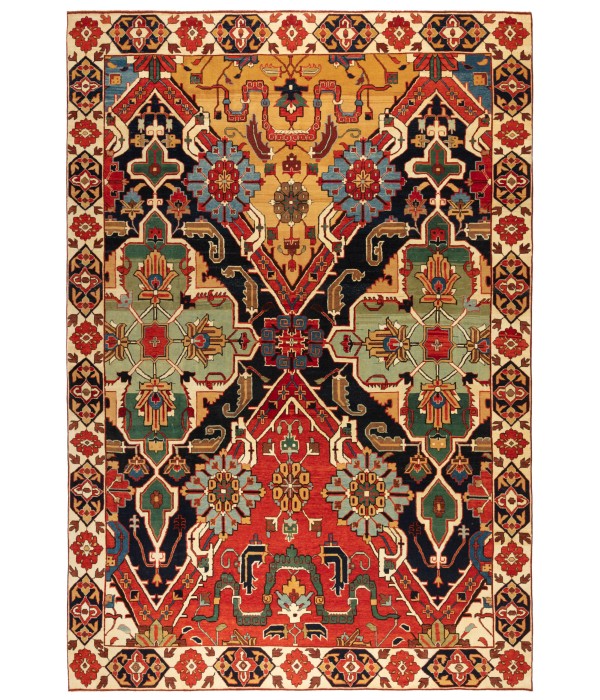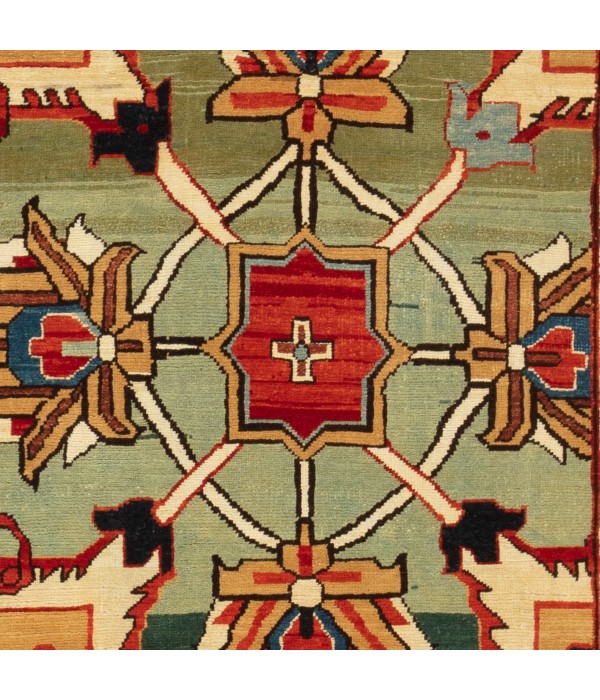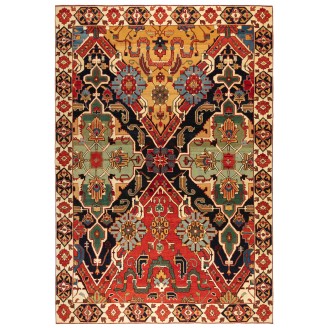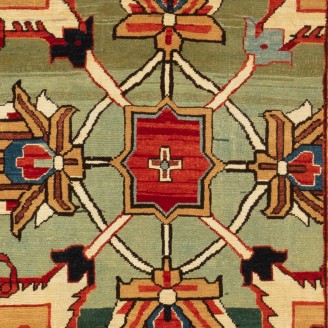Nigde Carpet


Out Of Stock


Model: ART00046Nigde Carpet
Group: Caucasian Rugs Family
Area: Kuba
Material of Pile: Natural Dyed Hand-spun Wool
Material Warp / Weft: Wool on Wool
Structure: Symmetrical knot on depressed warp inclining to the right
Knots Density: 39x39
Pile (mm): 4
Production Place: Southeastern Anatolia – Adiyaman Province - Bozatlı
Location: Tokyo
Stock: Out Of Stock
Dimensions:
The source of the carpet comes from the book Islamic Carpets, Joseph V. McMullan, Near Eastern Art Research Center Inc., New York 1965 nr.41. This rug has become famous as the "Niğde Carpet." Although certainly produced in the Caucasus, it was found in the mosque of Niğde in Central Anatolia and was published in 1908 by F. R. Martin shortly after its discovery.In contrast to the other important rug types that have been produced in the same area, the Dragon Rugs and the so-called Kubas, the design of this carpet is highly unusual. It is based on a continuously alternating system of diamond-shaped medallions on a huge scale. One row of these diamond panels is filled with lancette leaves, palmettes, and cloud bands; the alternate row with large cruciform figures is filled with palmettes and surrounded by half-palmette and lancette leaves. Large palmette blossoms appear at the tips of the diamond points and in the center of each side of these panels. Alternating in the background color, the diamond panels create an almost unparalleled sumptuous effect. The border design follows a common Caucasian motif consisting of an alternate row of hexagonal cartouches, filled with stylized floral forms, and small floral rosettes. The other long-size example is exhibited at The Metropolitan Museum of Art (MET Museum Acc. No. 56.217). The design of this rug is interpreted and the most appropriate colors to match the original is used for this rug.
Color summary: 5 total Colors
Color summary: 5 total Colors
- Yellow Green 419 (Henna - Indigo)
- Imperial Red 426 (Madder Root)
- Dark Sienna 431 (Madder Root)
- Cadet Blue 26 (Spurge - Indigo)
- Sunray Color 405 (Henna)
Dimensions:
8 ft 4 in x 12 ft 1 in ( 255cm x 370cm )
Price:
$27,300
Ex Tax: $27,300
Ask a Question About This Product
Tags:
Oversize
